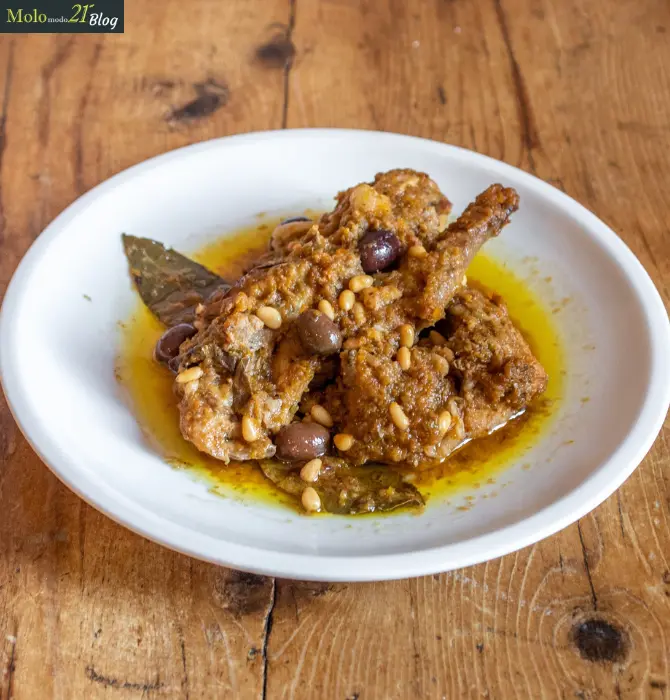Ligurian style rabbit


Ligurian style rabbit
INGREDIENTS FOR LIGURIAN STYLE RABBIT
HOW TO MAKE LIGURIAN STYLE RABBIT
-
Preparing rabbit meat
You can decide to have the rabbit already cut at the butcher's or buy it whole and clean it yourself. If you buy it whole, keep the head to flavour the stock while the liver and kidneys can be added during cooking, when you add the other ingredients to the rabbit.
-
The rabbit does not need marinating, but it is recommended to brown it on its own for a few minutes over a gentle heat, just to let it release the little wild flavour that this meat has. After this step drain the meat and remove the liquid from the pan.
-
Cooking Ligurian style rabbit
Meanwhile chop together the garlic, marjoram and sage. Fry the chopped mixture in the oil in a saucepan and then put in the rabbit pieces and brown them well. Deglaze with the Rossese di Dolceacqua DOC wine and let it evaporate.
-
Add all the pine nuts, the mushrooms (previously soaked), the bay leaf and just a few Taggiasca olives (keep the rest for the end). Season with salt and pepper.
-
Cook over a gentle heat for at least 45 minutes, occasionally basting the rabbit with hot stock. When you see that the meat starts to pull away easily from the bone, add the remaining taggiasca olives and finish cooking for a few minutes. The rabbit Ligurian style is finally ready and is served hot.
FAQs - Questions from our Community
As a side dish for rabbit Ligurian style, you can bring baked potatoes, mashed potatoes or slices of homemade bread toasted in a non-stick frying pan (or on a griddle) with a little oil, garlic, rosemary and salt.
The great thing about rabbit alla ligure is that you can experiment with the flavourings each time and always discover a new note of flavour. In addition to the ingredients already listed in our recipe, there are many local variations of rabbit alla ligure: if you are in Murialdo, for example, you could add a pinch of cinnamon to the broth; in Dolceacqua they prefer to use Rossese wine for cooking; while in Pietra Ligure they use thyme and bay leaves. You just have to try it!
Certainly a local wine, to characterise the dish territorially with a typical ingredient. Ligurian white wine is used in most versions of this recipe (e.g. Pigato) while as red wine Rossese di Dolceacqua DOC is used, the favourite in its area of origin, in the area between Ventimiglia and Bordighera.
Our advice is to drink the same wine you used in the recipe as a matter of correct pairing. So in our case it is the white wine Pigato but next time you could try another Ligurian white wine or the red wine Rossese, which is used in cooking rabbit Ligurian style in the area around the village of Dolceacqua.







